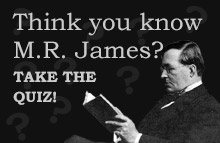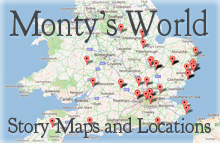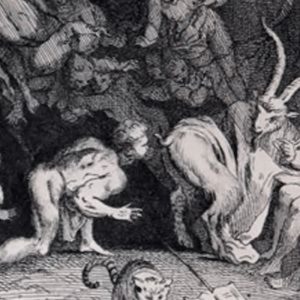 This episode Mike and Will brace themselves for the ‘appalling stench of goat, cordite, sulphur, and burning human flesh’ in M.P. Dare’s The Demoniac Goat. Lovely!
This episode Mike and Will brace themselves for the ‘appalling stench of goat, cordite, sulphur, and burning human flesh’ in M.P. Dare’s The Demoniac Goat. Lovely!
Also in this episode we speak to actor Robert Lloyd Parry and publisher Brian J. Showers about ‘Ghosts of the Chit-chat’, their soon to be published new anthology of ghost stories from authors who, alongside M.R. James, were members of the Chit-Chat Club at Cambridge University. You can find out more about and order the book itself at the Swan River Press website. You can also visit Robert’s website for a upcoming schedule of live performances, both in theatres and online.
Show notes
- Marcus Paul Dare (The Haunted Library)
Much of the biographical information we used on M.P. Dare came from the introduction to the Ash Tree Press edition of ‘Unholy Relics’ but also from this excellent article on The Haunted Library.
- Unholy Relics (Ash Tree Press @ Amazon.co.uk)
This story was originally published in Dare’s ‘Unholy Relics’ collection in 1947. Nowadays the easiest way to get hold of it is via Ash Tree Press’s ebook, which contains an excellent introduction by Reg Meuross as well as extracts from Dare’s book ‘Indian Underworld’.
- Shadows of the Master by Mike Ashley (Ghosts & Scholars)
The essay that drew M.P. Dare to our attention was ‘Shadows of the Master’ by Mike Ashley, which highlighted a number of authors who wrote stories in the Jamesian tradition.
- The Peak Cavern (peakcavern.co.uk)
Better known by its nickname ‘The Devil’s Arse’, this cave near Castleton in Derbyshire could have provided inspiration for M.P. Dare when writing this story.
- The Eldon Hole (wondersofthepeak.org.uk)
Similarly to the above, this famous crevasse on a hilltop near Castleton may have provided inspiration. Legends state that the Eldon Hole is bottomless, or that it leads straight down to hell!
- Offa of Mercia (Wikipedia)
The silver coins found by the dastardly Reverend Ashley Tutor were said to be pennies from the reign of Offa, who ruled the Kingdom of Mercia in modern day England during the 8th century.
- Crockford’s Clerical Directory (crockford.org.uk)
Since 1858 Crockford’s Clerical Directory as been the authoritative directory of the Anglican clergy. Previously it was a yearly publication, but can now be searched online.
- Cademan Wood (Google maps)
Searches for ‘Cademan Tor’ will draw a blank, but the name ‘Cademan’ in most associated with this area in north west Leicestershire.
- Asmodeus (wikipedia)
The titular goat in this story is named after this demon from Judeo-Islamic lore.
- Apollo and Lugh (wikipedia)
The god supposedly represented on this altar in this story is a compound of these two Roman and Celtic deities.
- Osculum Infame (wikipedia)
The ‘kiss of shame’ was an act believed by witch hunters to be carried out by witches upon meeting the devil!
- The Goat of Mendes (wikipedia)
The “Goat of Mendes” was a term invented by French occultist Levi Eliphas in the 19th century, drawing on representations of half men/half goat devils and deities across the western world such as Pan, Baphomet and Mendes, a Greek god.
Finally, here’s the picture of M.P. Dare in his pants. Thankfully it is only small. The image I mean.
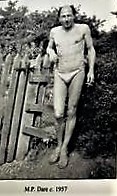
Podcast: Play in new window | Download
Subscribe:
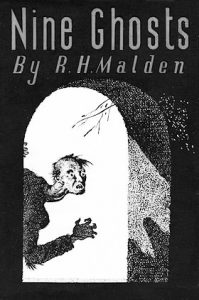 This Halloween Mike and Will stroll out into the garden to take a look at The Sundial by R.H. Malden. But who is that lurking in the bushes?
This Halloween Mike and Will stroll out into the garden to take a look at The Sundial by R.H. Malden. But who is that lurking in the bushes?
Thanks to Kirsty for providing excellent readings for this episode!
Show notes:
- Nine Ghosts by R.H. Malden (Project Gutenberg Australia)
Malden only wrote one volume of ghost stories, and it is available to read in its entirety on the Project Gutenberg Australia website.
- R.H Malden (Ghosts and Scholars)
This G&S article by Richard Johnson provides some biographical details about Malden, as well as some commentary on his stories. More biographical information can be found at Wikipedia.
- Scrinia Reserata (Google Books)
In the introduction Malden tells us that the manuscript that makes up most of The Sundial was found tucked inside a copy of this book, a biography of Archbishop John Williams.
- The Rose Garden by M.R. James (Wikisource)
It is hard to discuss The Sundial without repeatedly coming back to its clear inspiration, The Rose Garden by M.R. James.
- Why were people who died by suicide historically buried at crossroads? (HistoryExtra.com)
This brief article explores the history of crossroad burials, as well as touching on the publics changing attitude towards suicide as a result of the death of Lord Castlereagh.
- Croxton, Cambridgeshire (Google Maps)
The unnamed author omits the location where The Sundial takes place, but provides enough small details throughout the story to fairly confidently identify Croxton Park in Cambridgeshire as the most likely real-world location. As with the house in the story, Croxton Park is 60 miles north of London, and close to a mainline railway station. The house was built around the same time mentioned in the story, and has the site of a medieval hamlet within its grounds. In the story the house lies between the villages of ‘Abbotsley’ and ‘Farley’. Croxton Park is bordered by Abbotsholme to the south west and Eltisley to the east. See here and here for more details on the history of the house and park, including historical maps.
- Nightjars (Legendary Dartmoor)
There are many superstitions concerning Nightjars (or Goatsuckers, as they are sometimes called!). This is likely due to their nocturnal habits and unusual cry.
- Sundial mottoes (wikipedia)
Malden doesn’t explain the exact motto that the narrator puts on his sundial, but this list of sundial mottoes will give you a flavour of the sort of thing that adorned ornamental sundials of the period.
- Spirits of Solomon (Fandom Demopedia wiki)
At the conclusion of the story Parker, the ex-sergeant of marines and butler, purchases a picture of ‘King Solomon issuing directions to a corvée of demons‘. It is most likely a version of the picture in this article, which also list all 72 of the spirits/demons that King Solomon was said to have commanded!

Podcast: Play in new window | Download
Subscribe:
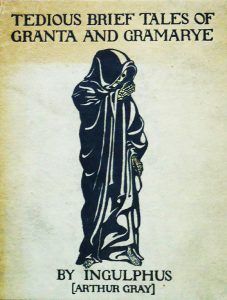 This episode Mike and Will travel back to 16th century Cambridge to get acquainted with a rather unsavory guest at Jesus College in ‘Brother John’s Bequest‘ by Arthur Gray. Booze, burials and bell-book-and-candle are the order of the day here, with a side order of spitting. Eww.
This episode Mike and Will travel back to 16th century Cambridge to get acquainted with a rather unsavory guest at Jesus College in ‘Brother John’s Bequest‘ by Arthur Gray. Booze, burials and bell-book-and-candle are the order of the day here, with a side order of spitting. Eww.
Big thanks to Kirsty for providing the excellent readings for this episode!
Notes
- Arthur Gray (Ghosts & Scholars)
This excellent Ghosts & Scholars article by Rosemary Pardoe provides biographical information on Arthur Gray, as well as plot synopses for all the stories in ‘Tedious Brief Tales of Granta and Gramarye’. It also contains the poem that we mention in this episode, published in 1911, which speculated about the identity of the then-mysterious ‘Ingulphus’!
- Ingulf, Benedictine abbot of Crowland (wikipedia)
The 11th century monk Ingulf (or Ingulphus in Latin) is where Arthur Gray borrowed his pseudonym. Ingulf’s writings were studied extensively by historians but his name became a byword for unreliability when the works were found to be a forgery, written long after his death!
- Arthur Gray and the Ghost Club (anilbalan.com)
This blog post discusses Gray’s most famous story The Everlasting Club, mentioning how it quickly came to be part of the lore of Jesus College.
Podcast: Play in new window | Download
Subscribe:
 This episode Mike and Will brace themselves for the ‘appalling stench of goat, cordite, sulphur, and burning human flesh’ in M.P. Dare’s The Demoniac Goat. Lovely!
This episode Mike and Will brace themselves for the ‘appalling stench of goat, cordite, sulphur, and burning human flesh’ in M.P. Dare’s The Demoniac Goat. Lovely!

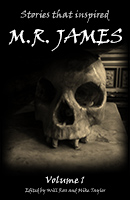

 This Halloween Mike and Will stroll out into the garden to take a look at
This Halloween Mike and Will stroll out into the garden to take a look at  This episode Mike and Will travel back to 16th century Cambridge to get acquainted with a rather unsavory guest at Jesus College in ‘Brother John’s Bequest‘ by Arthur Gray. Booze, burials and bell-book-and-candle are the order of the day here, with a side order of spitting. Eww.
This episode Mike and Will travel back to 16th century Cambridge to get acquainted with a rather unsavory guest at Jesus College in ‘Brother John’s Bequest‘ by Arthur Gray. Booze, burials and bell-book-and-candle are the order of the day here, with a side order of spitting. Eww.



